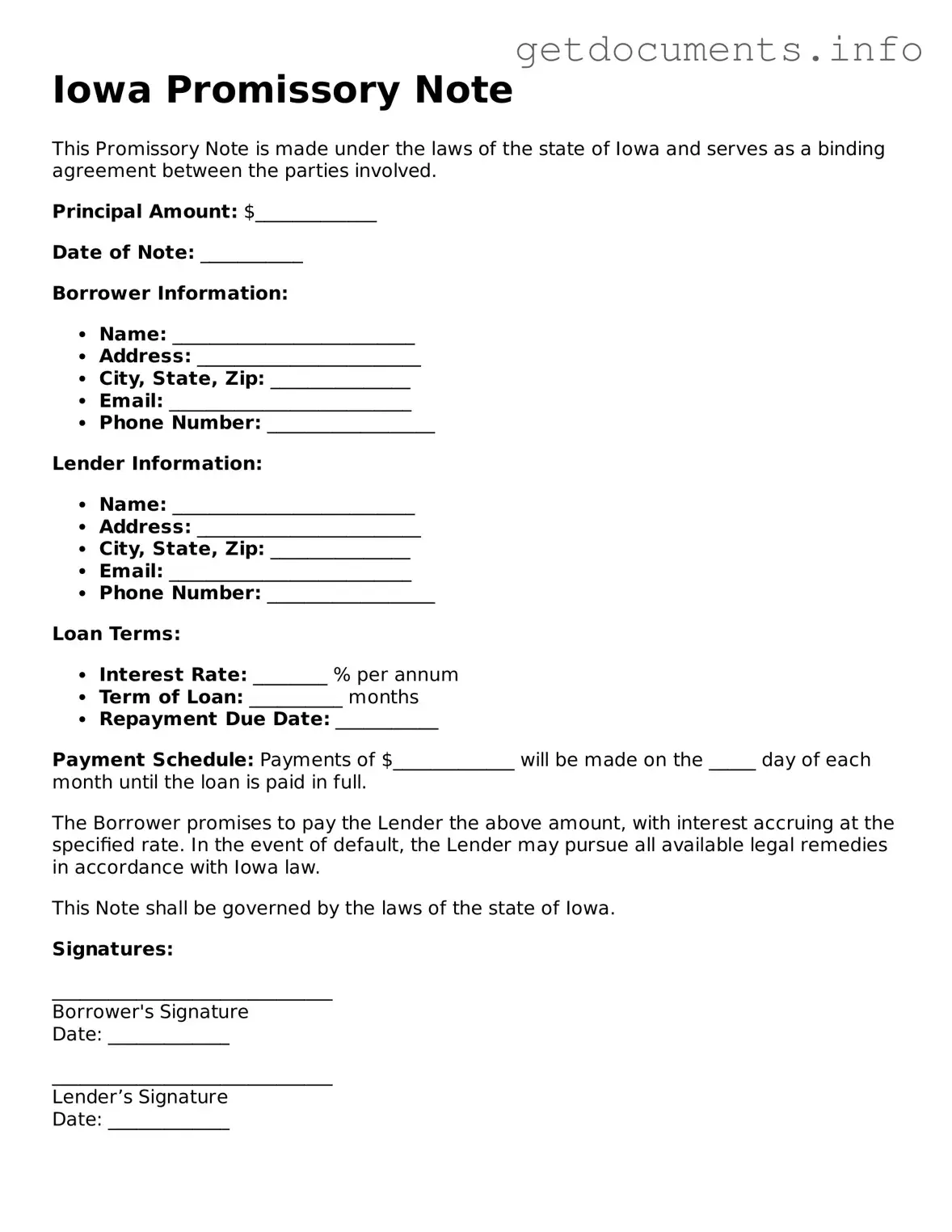Free Promissory Note Template for Iowa
A Promissory Note is a written promise to pay a specified amount of money to a designated person or entity at a future date or on demand. In Iowa, this form serves as a legal document that outlines the terms of the loan, including the amount borrowed, interest rate, and repayment schedule. Understanding this form is essential for both lenders and borrowers to ensure clear communication and legal protection.
Ready to fill out the Iowa Promissory Note form? Click the button below to get started!
Access Promissory Note Editor
